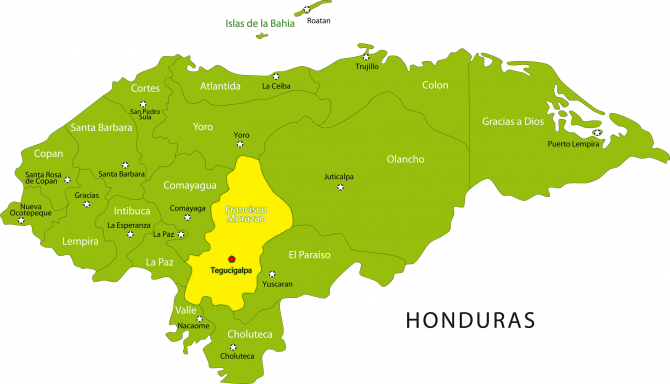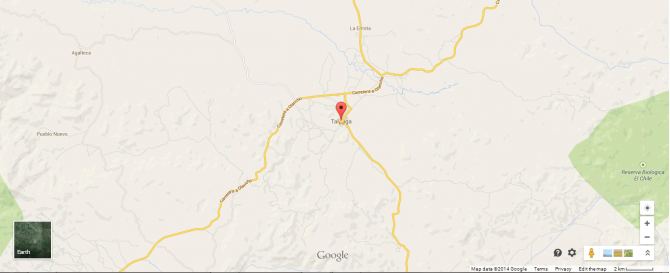Majada Verde & La Montanita, Honduras
![]()
![]()
![]()
![]()
![]()
![]()
![]()
![]()
![]() Click on Programs to learn more about their work in this community
Click on Programs to learn more about their work in this community
General Information
| Population* | ~800; approx. 300 inhabitants being children |
| Number of homes | 332 |
| Avg # of people per home | 5-6 |
| Primary Occupations | Agriculture |
| Water System | Yes- gravity system in Majada Verde |
| Community Bank | None |
| % of Homes with Latrines | ~10% (15 out of 146) |
| Electricity | Only community leaders homes |
| Corresponding Health Center & Distance | CESAMO in Talanga; about 3-4 hours walking distance |
| Common Illnesses | Cold, flu, diarrhea, head-lice |
| School Access and Distance | 1st-6th grade in community (30 min walking distance) and secondary school in Talanga |
| Municipality | Talanga |
| Department | Francisco Morazán |
| Distance from compounds | 2 hours and 30 minutes |
* Population does not reflect how many patients will be seen on medical
brigades as many people from surrounding communities come seeking
Medical Brigades medical attention.
Top Needs Expressed
The top three needs expressed by the community are: First, the need for a closer health center, as the nearest one is a long (3-4) hour walk on a difficult road to Talanga. Second, latrines are a major need—very few houses (10%) have latrines and the existing ones are in disrepair and non-functional. Third is the need for a secondary water source to add on to their existing source as many houses do not get water in the summer due to low water levels.


Majada Verde is located in the Francisco Morazan department of Honduras. It is located in the municipality of Talanga, shown on the map above. It is a high-elevation community.
Majada Verde and La Montanita both have a local kindergarten and primary school.There are currently 170 students enrolled. Every year, parents pay a 10-15 Lempira fee/ or purchase school supplies and uniforms in order to enroll their students in the system. Unfortunately, if parents cannot pay or puchase the materials needed, then their students cannot attend school. During periods of heavy rainfall, some of the students are unable to get to school due to inhospitable conditions, such as an overflowing creek.
Three teachers work with the primary school students and two teachers work solely with the kindergarteners. The primary school teachers commute from Talanga every day, while the kindergarten teachers live in the community.
The school is in session February through November, Monday through Thursday, from 8:30 am until 12 pm. The subjects taught in school include Spanish, mathematics, social studies, natural sciences, music, physical education, and sex education. From 2010 to 2014, three out of forty studentss chose to attend secondary school, in Talanga. Low, secondary school enrollment numbers are due to a lack of economic resources.
A government program provides certain materials, such as rice, beans, corn, and oil, which are used to make breakfast for the students. A local parent organization, “Padres de Familias”, works closely with teachers to ensure the well-being of students. Some of the problems expressed by the members of the organization include insufficient funds to pay for higher schooling, school supplies and uniforms.
The community currently has a gravity system that was installed by an NGO approximately two years ago. Before the completion of the project, community members obtained water from the many natural springs that can be found in the mountainous terrain. For residents of Majada Verde, this was not too difficult of a task since they lived close to these water sources, though often times these would not be sufficient since several families would be utilizing a single spring. For residents of La Montanita, few streams are the only source of water and community members make around 5-6 trips a day to collect large bucket-fulls of water.
Currently, 115 homes in Majada Verde are connected to the public water system. These families are required to pay a monthly fee of 30 Lempiras/month, however many are not able to afford this and simply do not pay the fee. The houses that are not integrated into the public water system do not have the right to be connected because they did not help with the construction of the system. These households do, however, have the opportunity to pay a fee of 2,500 Lempiras to connect to the system. Newly constructed homes, owned by people who did not work on the project, are also required to pay this fee.
The present collection tank has a 20,000-gallon water capacity, but it is never entirely full. The tank reaches approximately 3/4 capacity during the rainy season, and drops to 1/3 capacity during the dry, summer season (at which point there is very low water pressure, and some homes do not receive any water). Another problem with the system is that there is too much pressure for the pipes to bear, which then leads to pipes breaking. The water committee suggested installing pressure breakers to resolve this issue. The community is also experiencing issues with runoff pesticide and fertilizer contamination from coffee fields located near their dam. One way to resolve this could be to construct some sort of drainage system to redirect the runoff water and prevent it from entering their water source. The water committee also discussed plans to construct another dam, which would feed into the current water system to resolve the water pressure issues in the homes during the dry season.
Chlorine treatments had been administered to the collection tank in the past. However, the water treatment ended with some of the community members complaining about the taste of the water. Community members are now required to treat their water at home. Some choose to chlorinate it and others boil it, but most choose to do nothing.
The community of Majada Verde does not have a local health center. A volunteer organization, called “Voluntarios de Salud”, assists community members with their health needs, for example, by monitoring the well-being of pregnant women. Community members give 10 Lempiras per month to the group and these funds are set aside for medical emergencies. The community also has a midwife, who received her training from an NGO and has been practicing for eighteen years. She receives the births at her clients’ homes.
The closest health center is in Talanga, with the visit fee being 5 Lempiras. There is also a private health center that is 10 minutes away from Talanga but costs 200 Lempiras per visit. The closest hospital is in Tegucigalpa, which is an hour-long drive by car. In Talanga, there is an emergency service, which has one ambulance and serves several communities in addition to Majada Verde. The ambulance also provides transportation from Talanga to Tegucigalpa.
Most common, reported illnesses are the flu, diarrhea, cold, fever, and head-lice. Currently 15 homes have working latrines and 4 homes have concrete floors. Most people have pilas but no showers. In most households, the stoves do not have chimneys. Sex education is taught at school as part of the curriculum. Some of the problems reported by the community include: large distances from the health centers and the hospital, lack of concrete floors and latrines, and defective roofs.
The main source of income is outside of the community. Families grow mostly corn and beans for their own consumption. Men often leave to do day labor on other people’s land or work in the sugar cane fields in the months of January to March. The approximate income generated from these sources is 100-200 Lempiras a day, but work is not available consistently, so monthly and yearly averages for income are hard to predict for each family.
Majada Verde is a security-stable community with minimal crime. The average amount of people per household is estimated between 7 and 12. The community has access to roads but the infrastructure is poor, especially for the transportation of large vehicles. The level of organization is minimal. There is a presence of community but a shortage of collaboration to improve economically as a whole. There are no designated spaces for brigades besides the primary school. There would not be enough space for large brigades. The community’s infrastructure is minimal and unreliable, and especially the community’s water system. For example, latrines were last built in the 1980s and have since fallen apart. Agricultural practices are most evident in the community; farmers grow beans and bananas for personal consumption. The geography is mountainous with a sylvan setting and the climate is tropical with cool winds.
Check back for photos of Majada Verde & La Montanita soon!
There is a church-based NGO that implements a “Merienda Escolar” program that provides basic breakfast foods at the primary school like corn, beans and tortillas. They also help give materials to begin the school year and help with costs of registering for school.